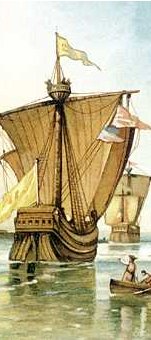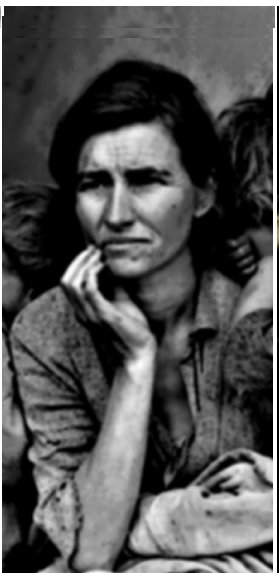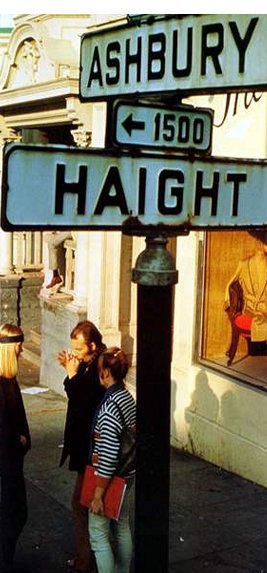The Governor Who Changed It All Joel Kang
Spencer C. Olin, Jr., a professor from Claremont Graduate
School, wrote many historical novels such as California¡¦s Prodigal Sons: Hiram
Johnson and the Progressives, 1911-17, California
Politics: 1846-1920, Racism in California:
A Reader in the History of Oppression, and Why War? Ideology,
Theory, and History. There is not much information about his life and
past achievements, but he is a passionate writer who writes for his mother and
father.
The
Progressive movement, which took place in the first two decades of the twentieth
century, was manifested in California,
and was a period of reform that opposed waste and corruption, and sought changes
in the worker's rights and protection of the common citizen. Progressivism was
a ¡§response to social and economic issues and to the radical streams of
socialism and anarchism which opposed them.¡¨1 The California
governor, Hiram Warren Johnson, played the major role in the movement by
leading the Progressives into their start and peak¡Xall the way to their
downfall. The historical novel, California¡¦s
Prodigal Sons: Hiram Johnson and the California
Progressives 1911 ¡V 1917, by Spencer C. Olin, distinctly focuses on the
Progressive era from the start gradually progresses from the local to the national
level. In the earlier periods of the history of the United
States of America, the lawyers, clergy and
other professional men of high power traditionally held the positions of
authority and power. By the end of the nineteenth century, however, industrial
leaders start to violently seize the position of many workers and small
businesses it in a way which becomes repugnant to the industrial leaders¡¦ moral
ethic despite the many skeptics and dangers that came their way from the many
critics and opposers. However, naturally, the
Progressive Movement receives strong support from the growing middle class
groups.
Hiram
Warren Johnson was the leading American progressive who played a major role in
the Progressive Era. Johnson was born under a lawyer father in Sacramento,
California. He went to the University
of California at Berkeley
and practiced law with his father until 1902. Then, Johnson left Sacramento
and moved to San Francisco to set
up his own law practice. Johnson worked long and hard and his participation
with many of the labor trials made him ¡§the perfect candidate for the reform
movement.¡¨2 He had supports from many different towns and cities,
and he also had the strong support by the anti¡Vlabor groups all across the
state of California because of
his past cases in which he prosecuted many corrupt labor leaders. With the
support from individuals all across the state, Hiram Johnson¡¦s future in
politics looked brighter than any other leader in California
history.
In the first part of the book,
Spencer C. Olin provides the reader with the basics of the Progressive Era and
of its start. It began with the legislative session of Hiram Johnson in 1911
and of its problems of railroad control, corruption in government, labor
conditions, immigrant housing and education, and agricultural production and
distribution. In addition, ¡§California
had a special problem¡Xdomination by one large corporation¡¨3¡Xthe
Southern Pacific Railroad. The Southern Pacific established a complete monopoly
of rails in California by the
1870¡¦s, and the corporation entered politics to preserve and enhance its
monopoly and to extend its influence throughout California.
The Southern Pacific Railroad reflected the dangers of the situation in which
industry had become hazardously and dangerously become too powerful. However,
the ¡§good finally prevails¡¨4 as Hiram Johnson and the California
Progressives ¡§kicked¡¨ them out of politics by getting rid of their monopoly and
by destroying their dominance in politics. Olin then takes the reader back to
the story of Hiram Johnson¡¦s initial steps in his election for governor. First,
he mentions the adoption of the initiative, referendum, and recall in Los
Angeles as it soon became the first city in the United
States to write the recall provision into
its law. In 1906, new approaches to political reform were made as youthful
leaders against the machine-controlled country of California
met in a state-wide convention and created an organization called the Lincoln¡VRoosevelt
League. However, the Lincoln¡VRoosevelt League was in desperate need to find its
own candidate in the governor¡¦s chair or their league would remain potentially
dangerous to the Southern Pacific. By 1910, Johnson emerged as ¡§the most
popular choice.¡¨5 However, he refused to run, but despite his
refusal, a special committee was created to persuade Johnson to run for
governor¡Xreceiving the order ¡§to do almost anything¡K to compel him [to enter
the race].¡¨6 After many attempts and after talking to Mrs. Johnson,
Hiram Johnson decided to run and informs the committee that he would ¡§conduct a
vigorous campaign.¡¨7 Johnson was finally elected and in his
inaugural address in January 3, 1911,
he presented his goals to develop an efficient public service that reflected
the public good and not the good of special interests. The governor¡¦s specific
legislative recommendations demonstrated his intention to ¡§return the
government to the people¡¨ and to give them the honest public service
untarnished by corruption and corporate influence.
After Hiram Johnson was elected
governor of the state in 1932, the California
progressives become anxious to find another Republican candidate who could
replace President Taft. Taft was personally selected by Roosevelt
to carry on the Progressive tradition that he had started, but he failed to achieve
the pending shift in party control. While the Progressives were looking for a
new candidate, early in 1912, Theodore Roosevelt changed his mind and decided
to run again. He consulted Hiram Johnson, who opened the California
campaign for Roosevelt. With Hiram Johnson as the leader
in the ¡§Bull Moose¡¨ Campaign, the campaign of 1912 was ¡§an exciting affair.¡¨8
However, although Roosevelt received more votes than
Taft in 1912, Woodrow Wilson won in a landslide¡Xthe fight between the
Republicans concluded in the Democrat¡¦s victory. Having devoted most of their
energies to the national campaign in 1912, Hiram Johnson and his advisers then
decided to turn their complete attention to state matters. After the Bull Moose
Campaign with Roosevelt, many progressives had enough of
reform and before the legislation of 1913 convenes, it became clear that the
unity characterizing the California Progressive Movement was starting to fall
apart and lose its existence. For other state matters, the growing number of
workers in California after 1900
made it difficult for labor unions to maintain the minimum wage level so the
Industrial Welfare Commission was created. Throughout Johnson¡¦s governorship,
he worked long and hard to examine labor conditions in the garment, laundry,
and canning industries. He also created the Industrial Accident Board and the
Act of 1913 to administer and enforce safety in industry, state insurance
funds, and much more.
The third section of the novel
consists of party discord as the national Progressive Party start to melt away.
Many leaders and individuals such as Meyer Lissner
were determined to break away from the California Republican Party. Johnson
also wanted to organize a new party for his people. He strongly stated that: ¡§The
longer we continue as Republicans the more difficult it will be to make the
break and the greater prestige we add to the old name.¡¨9 The
Progressive-dominated Republican State Central Committee disbanded on 1913 and
on the following day, in San Francisco,
formed the California Progressive Party. However, the struggle for Progressive leadership
came near open rebellion when in the mid-summer of 1913, when Heney came out and planned to run against Johnson in 1914. Considering
Johnson¡¦s sensitive and suspicious nature, he thinks that Heney
was brought in to unseat him be the central figure of the California
Progressive movement. Johnson ran again for a re-election and wins
overwhelmingly, but Heney¡¦s defeat became a damaging
blow to the Progressive prestige and nonetheless contributed to the decline. On
June 1916, two presidential nominating conventions were held in Chicago.
In the Progressive convention, the Progressive delegates reassembled to hear
Chairman Raymond Robins read Roosevelt¡¦s answer to their
nomination. He declined their offer and nomination as President and for a
moment there was silence¡X¡§the cry of a broken heart.¡¨10 The
Progressives were now a party without a leader. Feeling abandoned, many left
the Progressive Party for good and carry thousands with them. The Republican party¡¦s political future now depended fully on Hiram Johnson
so, with his full devotion, Hiram Johnson offered to run for senator on the
Progressive and Republican tickets. A motion to endorse his candidacy was carried
unanimously.
On August 29, the voters of California
express their preference, and Hiram Johnson won both the Progressive and
Republican primaries. The final section of the novel summarizes the concluding
stages of Hiram Johnson¡¦s career as he became a senator and so remained one
until his death in August 6, 1945.
Furthermore, the final section of the novel speaks of the next presidency with
Woodrow Wilson and his second term in office. Many Progressive leaders who had
voted for Roosevelt voted for Wilson
and, in addition to the support from Progressive defectors, the labor vote, and
the peace votes, Wilson won because
he strongly appealed to the small towns and the countryside. Thus, with the
election of Woodrow Wilson, a Democrat, ¡§the Progressive Era soon comes to an
end.¡¨11
Spencer C. Olin establishes a
strong tone of reverence toward Hiram Johnson and a theme of his importance and
significance during his years as the governor of California.
By initially mentioning the problem with the South Pacific Railroad and of
Johnson¡¦s work in eliminating their dominance, Olin¡¦s thesis establishes Hiram
Johnson as ¡§the initial and central figure of progressivism,¡¨12 and
establishes the facts about how he was the necessary catalyst the growing
Progressive movement needed to reform California¡¦s politics and organize a
stronger, more ordered state that give back to the people and benefit the many
individuals who suffered through hard times rather than the ones who lived
wealthy, comfortable lives.
In 1951, George E. Mowry published The California Progressives and broadened
the ultimate understanding of the Progressive era. Not only that, he also gave
a wealth of information about progressives in California
for the many ignorant individuals and opened a forgotten door in history. He
was among the first ¡§to draw the attention to Progressivism,¡¨13 and
Olin¡¦s work is clearly the new summation of the works of Mowry
with newly released documents of Hiram Johnson during the Progressive era. As
for historiography, by initially establishing his firm interest and passion
toward the Progressive era in the preface, Olin establishes a positive tone
toward the Progressive Era, assuming that the reader has a fair interest toward
the subject. With that, he thoroughly takes the reader back into history as the
reader takes an adventure through time in order to learn and realize the
importance of the Progressive era and its ultimate influence in United
States¡¦ politics.
The review by Robert Wiebe, published by The American Historical Review,
says that the book is ¡§a modest, carefully documented, and closely reasoned
account of progressives in power.¡¨14 He, indeed, ¡§broadens
considerably our understanding of the Progressive Era¡¨15 with the
wealth of information about the progressives and their links with the
nationwide movement for reform. In addition, with the past history of the
Progressive era left by historian George Mowry and
with newly discovered information called the ¡§Hiram papers,¡¨, Olin provides a
fresh, more developed interpretation of the reform movement and the social
perspective of its leaders in the era. However, Samuel Haber
from the University of California,
Berkeley, states that Olin ¡§puts
[the] information together in an off-hand and unreflective way.¡¨16
Olin does have negative comments about Hiram Johnson, but after a while,
showers the reader with the more positive aspects of him. He adds much to our
knowledge and the information is very informal, but the one disappointing
aspect is that he does not help us understand the laundry lists of information
that is presented.
Olin, with his strong tone and
characterization of Johnson as shrewd and dedicated, successfully ¡§[continued]
George Mowry¡¦s study about the California
Progressives¡¨17 and provided adequate facts and analysis of Johnson¡¦s
role in the initial to the final stages of the era. Furthermore, with the newly
discovered documents of Johnson, Olin successfully transfers obscure and
unknown knowledge of the Progressive era as he records the littlest details of
the era and of Hiram Johnson¡¦s strong and dominant role from its beginning to
its peak. Additionally, Olin builds Johnson as a character to look up to¡Xa
character that is soon revered, adored, and appreciated by readers. Despite the
fact that the Progressive era met a fall and decline, Olin firmly establishes
the importance and significance of the Progressive era to US politics and of
its inevitable influence to the further enhancement of the US
government as the citizens receive the freedom and democracy in which they are
promised.
California
was, indeed, reflected and influenced by the events occurring in the East
United States. As a Progressive and Republican, California
was greatly affected in the presidential campaign against Woodrow Wilson as the
opposing parties strived to win the presidency. Hiram Johnson was the ¡§vigorous
campaigner¡¨18 who led the pack, and while Progressivism was at its
peak, had an incredible amount of influence throughout the country. Furthermore,
with the many new reforms that occurred throughout the era, California
was greatly affected and met many changes in policies regarding jobs and the
rights of individual workers. For example, the Triangle Shirtwaist Factory fire
that occurred in New York City in
1911 was one of the largest disasters in the east coast which called for many
new laws and acts that protected the individual workers who devote more than
ten hours a day in the closed, compacted factories. With many new reforms and
with Johnson pursuing his promise to give the government back to the people, ¡§the
policies of the United States
in the Progressive era met many new and improved modifications¡¨19
that completely enhanced the lifestyles of many families.
California
was clearly distinct from other parts of the country because Progressivism
sprouted and reached its peak with Hiram Johnson and the leader. The
Progressive party formed in California
and ¡§grew to an era of reform and change¡¨20 with a terrific and
renowned leader, Hiram Johnson. Hiram Johnson played the role as California¡¦s
mightiest weapon as his charismatic leadership qualities brought about the rise
of the Progressive era and was able to meet its peak. Furthermore, California,
with its impressive population density, had a significant amount of influence
as it led many of the reform movements to pass and establish more of a comfortable
living environment for the hardworking, diligent citizens who deserved the full
benefits of freedom and democracy.
The author, extremely fascinated
with the study of Progressives in California, tries to fully continue and build
up the foundation that was set by George E. Mowry who
fantastically recorded the forgotten Progressive era. He sees California has
the initial start for the Progressive era and as the important center for
reform in the early 1900¡¦s as the Progressive movement brought about many major
changes that not only benefitted the small,
individual citizens, but also the country as a whole. He also sees the
Progressive Movement as a ¡§social phenomenon¡¨21 as citizens took
action and demanded new reforms which inevitably led to more of an advanced
politics and to more of a secure government that stretches out to the weak and
poor, practicing and striving for the full benefits of democracy and the full
freedom of their rights. Olin will probably continue to document the stories of
the past and will leave more traces of Progressivism behind for the many generations
to come.
The Progressive Era in
California was not only a ¡§period of important reform for the citizens,¡¨22
but was also a period of developing a foundation for the government in
order to bring about a more united, organized, and ready society for the many
hardships that are to come. Furthermore, without the influence of Hiram Johnson
and without his continuous hard work for the six years he served as governor, California
as well as the country would not have developed to their current states and the
¡§comforts of a free country¡¨ would not be as meaningful as it is today.
1. ¡§Progressive Era.¡¨ Eagleton Institute of Politics. 2004. 30 May 2008. < http://www.eagle
ton.rutgers.edu/e-gov/e-politicalarchive-Progressive.htm>
2. Olin, Spencer C. California¡¦s Prodigal Sons: Hiram
Johnson and the Progressives 1911-1917. Los Angeles,
California: University
of California Press, 1968. p.25.
3. Olin, Spencer C 14.
4. Olin, Spencer C 18.
5. Olin, Spencer C 21.
6. Olin, Spencer C 21.
7. Olin, Spencer C 22.
8. Olin, Spencer C 66.
9. Olin, Spencer C 107.
10. Olin, Spencer C 110.
11. Olin, Spencer C 118.
12. Olin, Spencer C viii.
13. Olin, Spencer C 21.
14. Wiebe, Robert. ¡§[untitled].¡¨ The American Historical Review, Volume 74 (Oct.,
1968): pp. 318-319.
15. Wiebe, Robert iv.
16. Haber, Samuel. ¡§[untitled].¡¨ The Journal of American History, Vol. 55 (Dec.,
1968): pp. 663-664
17. Olin, Spencer C vi.
18. Olin, Spencer C 67.
19. Olin, Spencer C 192.
20. Olin, Spencer C 217.
21. Olin, Spencer C 183.
22. Olin, Spencer C 153.










